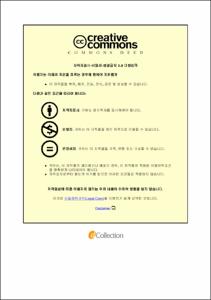Ulsan Univ. Repository
Thesis
General Graduate School
Computer Engineering & Information Technology
1. Theses(Master)
A Testbed for Spectrum Sensing in Cognitive Radio Networks
- Abstract
- Demand of wireless communication has been increasing rapidly in data transmission due to rising of the wireless services, devices and applications. Regarding such a context, the radio resource for supporting the demand is seriously lacked. In the coming decades, this problem will deteriorate due to an explosive growth of IoT (Internet of thing). Meanwhile, the spectrum allocation policy in which government agencies assign static spectrum to licensed users (or primary users (PUs)), leads to inefficient utilization of a large amount of licensed spectrum.
Due to under-utilization of radio spectrum resource, the concept of cognitive radio networks has been introduced by Mitola and considered as an alternative, that can be used to exploit the existence of unused licensed frequency bandwidth. In this concept the unlicensed users (or secondary user(SUs)) can sense the spectral environment to dynamically and opportunistically access the spectrum bands in absence of primary user at a particular time and specific geographic location.
In general, Pus’ have not been very receptive of the idea of opportunistic spectrum sharing. In particular, they are concerned that cognitive radio (CR) will harmfully interfere with their operation. There is considerable debate whether it is possible to build a CR that does not disturb PUs. However, this debate cannot be resolved on a theoretical basis. As it is impossible to test all possible cases, it is necessary to commonly agree on a set of “representative” test cases that a CR must pass to “prove” that the amount of interference is sufficiently low to justify allowing CR technology. There is a plethora of techniques such as cooperative sensing, Cyclostationary detectors, energy detection etc. that have been proposed to enhance detection. None of these techniques have been tested all in real world scenarios and their performance has yet to be characterized. Thus, there is a need for experimenting with different techniques in a real system, using a set of test cases and metrics to compare different CR implementations. In this research, we cover the details of such experiment testbed of spectrum sensing for CR based on energy detection algorithm and a software defined radio (SDR). This testbed has been built on GNU radio platform using the universal software radio peripheral (USRP) NI-2900 supported by National Instrument to evaluate the sensing performance of energy detection in a real environment. We also implement a cloud server-based spectrum sensing such that we can store, process, and share the sensing information more efficiently in the centralized way at the cloud server. Finally, we do implementation of a real LoRa network based on LoRaWAN protocol for Internet of thing (IoT), create a gateway and build an application, then process the data to the cloud server.
- Issued Date
- 2018
- Awarded Date
- 2018-08
- Type
- Dissertation
- Affiliation
- 울산대학교
- Department
- 일반대학원 전기전자컴퓨터공학과
- Advisor
- Insoo Koo
- Degree
- Master
- Publisher
- 울산대학교 일반대학원 전기전자컴퓨터공학과
- Language
- eng
- Rights
- 울산대학교 논문은 저작권에 의해 보호받습니다.
- Appears in Collections:
- Computer Engineering & Information Technology > 1. Theses(Master)
- 파일 목록
-
-
Download
 200000102932.pdf
기타 데이터 / 84.18 MB / Adobe PDF
200000102932.pdf
기타 데이터 / 84.18 MB / Adobe PDF
-
Items in Repository are protected by copyright, with all rights reserved, unless otherwise indicated.